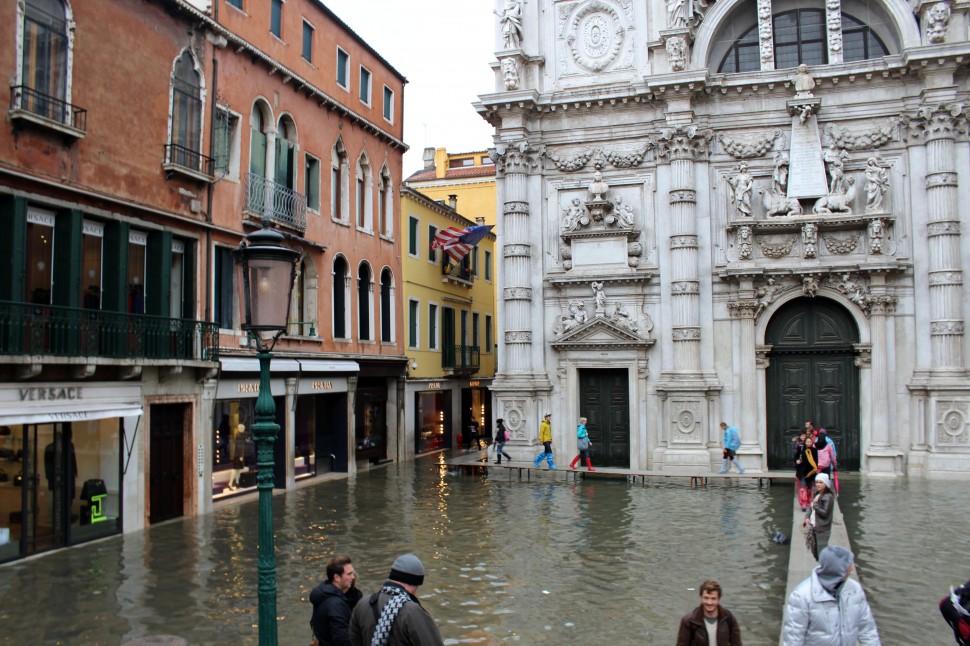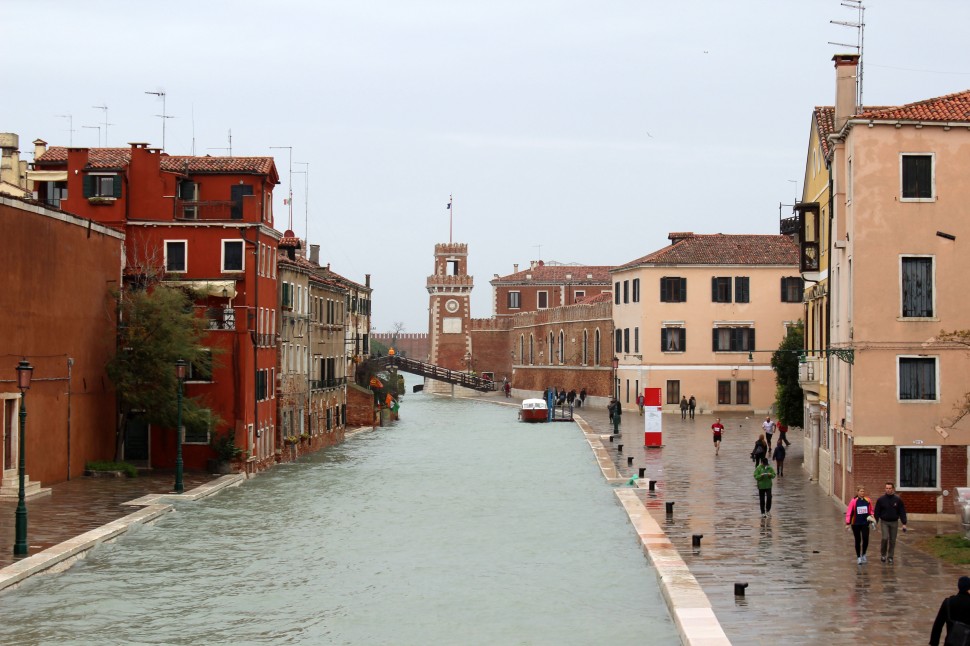
Acqua alta in Venice
If you travel to Venice in late autumn, you should know that your feet can get quite wet under certain circumstances, as the infamous Acqua Alta often occurs at this time of year. So before our trip (at the beginning of November) we thought about whether we should pack rubber boots as a preventive measure, but then we decided not to do so. When we arrived on Saturday, there was nothing to indicate an increased water level, but on Sunday morning we could hardly believe our eyes.
Due to a Mediterranean low, the water level rose to a record overnight and surprised us all on Sunday morning with a water level of 150 cm. This means that about 70% of the entire city is at least partially under water. The lowest altitudes, such as St. Mark’s Square, are most affected. From my hotel room, I no longer looked at paved paths, but at water channels.
Up to a flood level of 120 cm, there is a network of footpaths in Venice that guarantees dry feet. When the water gets higher, rubber boots are essential. By the way, the boots are sold everywhere (even in our hotel) and are not that expensive at 20 euros, because the quality is right.
I was amazed at the calmness with which the locals meet the masses of water. In front of many house entrances there are 50 cm high iron plates, which at least partially keep the water out. After about 4-6 hours, the spook is over. With the onset of low tide, the water slowly drains away. This is when all the shopkeepers take out the cleaning material to dry the wet shop areas. We ventured out of our hotel again and balanced on the wooden walkways in the direction of St. Mark’s Square.
In addition to climate change, which is slowly causing sea levels to rise, there are two other reasons why Venice is suffering from increasingly frequent flooding. On the one hand, the subsoil slowly gives way under the weight of all the buildings and “sinks” deeper and deeper into the ground. For this reason, groundwater abstraction has been regulated. On the other hand, the lagoon was worked in such a way that it became navigable for the large cruise ships, which had a significant impact on the local ecosystem.
In order to save Venice from destruction, the controversial project “Mose” – Modulo Sperimentale Elettromeccanico was developed. At three different entrances to the lagoon, huge steel boxes are supposed to hold back the water in the Adriatic Sea and seal Venice off from the open sea. If everything goes according to plan, this system will be put into operation in 2014. However, it is undisputed that this will also have a significant impact on the ecosystem and the natural process of the tides. It is to be hoped that at least Venice can be saved from slowly sinking.










Leave a Reply